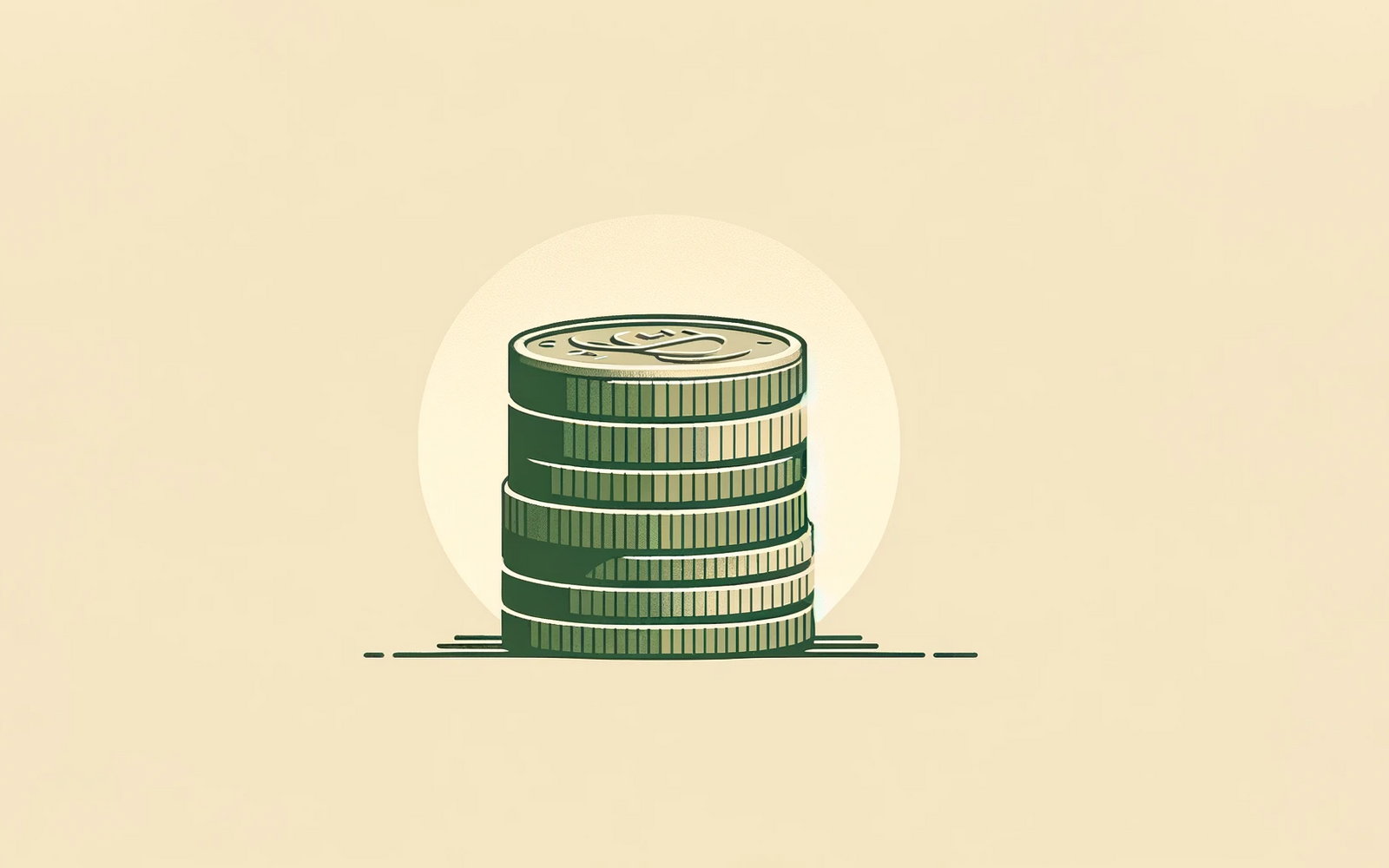
A frequently asked question about crypto is how wealth in crypto works with taxes. From 1 March 2024, tax returns can be filed for 2023. In this article, we provide a general overview of how crypto taxation works in the Netherlands.
Please note: Your personal situation may vary; therefore, it is advisable to discuss the exact details with a tax advisor.
When Is Tax Due on Crypto?
In the Netherlands, individuals file an annual income tax return. This is the time when the Tax and Customs Administration will also assess whether tax is due on crypto assets. Unlike several other countries, an individual in the Netherlands is not directly liable for tax when converting crypto to euros.
For entrepreneurs, different rules apply depending on the situation, making it even more important to consult a specialist. This situation is therefore left out of this article. For individuals, crypto falls into box 1 or 3 of the tax system, depending on whether the crypto was received as income.
Box 3: Crypto as Assets
For most people, crypto falls into box 3, making wealth tax potentially due. Box 3 tax is only due when the value of the total assets exceeds the exempt amount.
Assets include money in checking and savings accounts, cash, shares, bonds, personal loans, and also cryptos such as Bitcoin and Ethereum. From this total wealth, the asset exemption is first deducted (in 2023: €57,000 for singles, €114,000 for fiscal partners). Wealth tax is due on the remaining amount.
This wealth tax assumes a certain return. The Tax and Customs Administration levies tax on this assumed return. In 2023, the tax rate for box 3 is 32% on this assumed return. We will explain this later with a calculation example.
Box 1: Crypto as Income
Another scenario is that the crypto falls into box 1 of the tax system. In that case, the Tax and Customs Administration views it as income rather than assets. Examples of situations where the Tax and Customs Administration considers it income include mining crypto, being paid wages in crypto, or very active day trading. But when someone merely holds crypto as an investment without active day trading, it likely falls into box 3 and is not considered income in box 1.
In the case of mining, only the pure profit obtained from it is considered. All costs for equipment and electricity can thus be deducted from the proceeds, according to the Tax and Customs Administration's website. For those receiving salaries in the form of crypto, the employer must convert this to its euro value.
Staking Crypto Assets
In staking, someone effectively lends out their crypto, receiving a reward similar to interest. The goal of staking is to earn a return on an investment. Although the Tax and Customs Administration has not posted explicit information about staking crypto on their website, most agree that this could be considered assets and therefore belong in box 3. In that case, tax on staking would indeed be due.
Reference Date: 1 January
It is important to know that in box 3, the Tax and Customs Administration uses a reference date. This is 1 January of the year for which one is filing a return, at 0.00 a.m. Therefore, if filing a return in 2024 for 2023, one must look at the value of their crypto assets on 1 January 2023. This only concerns the crypto that one owned on the reference date.
It is important to use the exchange rate of the broker or exchange where the crypto was purchased, as there may be exchange rate differences between various exchanges.
Why Is My Crypto Not Pre-filled?
The Tax and Customs Administration can automatically fill in many details such as bank and savings balances and other assets like shares. Unfortunately, this is usually not the case for crypto, and it must be entered manually under 'other assets.'
New guidelines are being developed where crypto will soon also fall under the exchange of tax information, similar to banks. In November, the Netherlands and fifty other countries signed a framework called Crypto Asset Reporting Framework (CARF). And a month earlier, in October 2023, DAC 8 was adopted. This updated directive includes reporting obligations and automatic data exchange for digital currencies. These data will likely be automatically forwarded soon.
Tax Returns in Previous Years
In previous years, such as 2022, the tax on crypto was similar. The main difference in 2023 is that the Tax and Customs Administration is transitioning from a notional return to the actual return. In 2021, the Supreme Court ruled that taxation based on notional return is contrary to European law.
During the current transition phase, a distinction is made between notional return on savings and investments. The return rates for these categories are as follows: 0.92% on savings and 6.17% on other assets and investments. The intention is to tax actual returns from 2027 onwards.
The Rate of Major Cryptocurrencies on 1 January
As previously mentioned, the Tax and Customs Administration prefers using the rate on the used exchange where the crypto was bought. Keep this in mind. The following data are for indicative purposes only. On 1 January 2023 at 0.00 a.m., the rates of some major cryptos according to Coingecko, an independent platform, were:
| Crypto | Price on 1-1-2023 in dollars | Price op 1-1-2023 in euro |
|---|---|---|
| Bitcoin | $16.540 | €15.402 |
| Ethereum | $1.196 | €1.115 |
| BNB | $246 | €229 |
| Solana | $9,96 | €9,29 |
| XRP | $0,340 | €0,317 |
Example Calculation of Box 3 Tax on Crypto
Gerard bought Bitcoin for the first time in 2022: 2 BTC to be exact. On 1 January 2023, the rate of 1 BTC at the exchange he used was €15,400. Therefore, his total Bitcoin wealth was €30,800.
From 1 March 2024, Gerard fills in this amount on his tax return under 'other assets' of box 3. Additionally, Gerard had €50,000 in savings and €10,000 in shares. He has no debts. Gerard was single in 2023 and thus has an asset exemption of €57,000.
The return rates for 2023 are:
| Bankbalance | 0,92% |
| Investments and other assets | 6,17% |
| Debts | 2,46% |
Step 1: Taxable Return
Bank balances (his savings): €50,000 x 0.0092 = €423.20
Investments (crypto and shares): (€30,800 + €10,000) x 0.0617 = €2,517.36
Total taxable return: €2,940.56
Step 2: Basis for Return
Total assets €30,800 + €50,000 + €10,000 = €90,800. There are no deductible debts. Therefore, the basis for the return is €90,800.
Step 3: Exemption
Gerard now deducts the exemption for singles: €90,800 - €57,000 = €33,800.
Step 4: Calculate Share
Next, Gerard divides the result of step 3 by the result of step 2. He multiplies this by 100 to get a percentage (rounded to 2 decimal places).
€33,800 / €90,800 x 100 = 37.22%.
Step 5: Advantage from Savings and Investments
The advantage is the taxable return (step 1) multiplied by the share in the basis (step 4) and may be rounded in one's own favor:
€2,940.56 x 0.3722 = €1,094
Step 6: Calculate the Tax
Finally, Gerard takes the tax rate for box 3, which is 32% in 2023. He multiplies this by his calculated advantage:
0.32 x €1,094 = €350 is the tax Gerard owes on box 3.
Conclusion
In the Netherlands, crypto assets are taxed depending on their classification as assets (box 3) or income (box 1). Since this is usually not pre-filled, it is important to keep track of the value of crypto holdings on the reference date of 1 January.
Note: We do not provide financial or tax advice. It is advisable to consult a tax advisor if you have any questions.
The information provided in our articles is intended solely for general informational purposes and does not constitute (financial) advice.
Subscribe to our newsletter
Everything you need to know about Bitcoin, straight to your inbox. Subscribe now for the latest from Blockrise.


